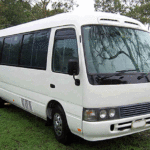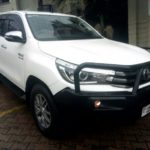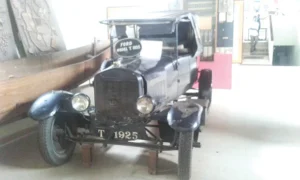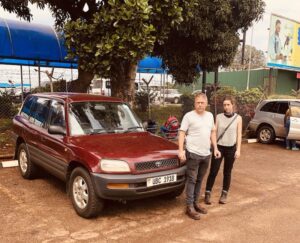
Uganda, aptly nicknamed the “Pearl of Africa” by Winston Churchill, is a land of extraordinary contrasts and breathtaking beauty. From the mist-covered Bwindi Impenetrable Forest to the thundering Murchison Falls, from the snow-capped Rwenzori Mountains to the vast savannahs of Queen Elizabeth National Park, this East African nation offers some of the continent’s most diverse and rewarding travel experiences. Yet, to truly unlock Uganda’s treasures, you need more than just a sense of adventure—you need the right vehicle. This is where 4×4 Uganda comes into play.
Why 4×4 Vehicles Are Essential in Uganda
Uganda’s infrastructure has improved significantly over the years, with major highways connecting key cities like Kampala, Entebbe, Jinja, and Mbarara. However, venture beyond these arterial roads, and you’ll quickly understand why a robust 4×4 vehicle isn’t just recommended—it’s essential.
The Reality of Uganda’s Roads
The majority of Uganda’s national parks, remote villages, and off-the-beaten-path attractions are accessed via murram (dirt) roads that can be challenging even in dry conditions. During the rainy seasons (March-May and September-November), these roads transform into muddy, rutted challenges that would leave ordinary vehicles stranded. Even during dry periods, the terrain demands high ground clearance, robust suspension, and four-wheel drive capability.
Consider the journey to Bwindi Impenetrable National Park for gorilla trekking—one of Uganda’s premier attractions. The final stretch involves navigating steep, winding mountain roads with sharp inclines and rough surfaces. Similarly, reaching the remote Kidepo Valley National Park in the far northeast requires traversing hundreds of kilometers of unpaved roads through rugged terrain.
Beyond Transportation: The 4×4 Experience
A 4×4 vehicle in Uganda isn’t merely transportation; it’s your mobile base camp, your wildlife viewing platform, and your gateway to authentic experiences. The elevated seating position provides superior game viewing during safaris, while the vehicle’s capability allows you to reach pristine locations that remain inaccessible to most travelers.
The Top 4×4 Vehicles for Uganda Safaris
1. Toyota Land Cruiser Prado: The Versatile All-Rounder
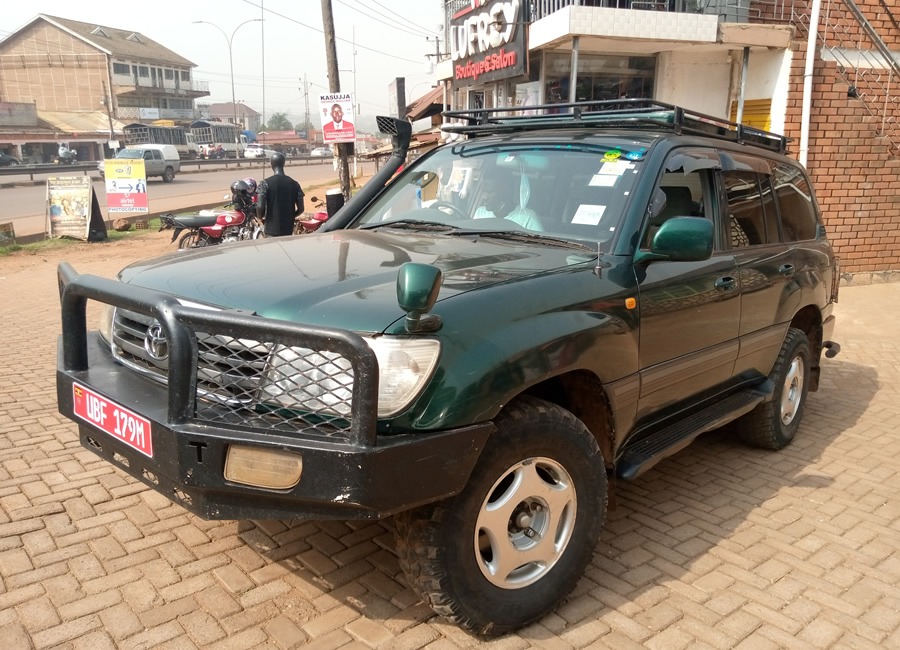 The Land Cruiser Prado has earned its reputation as one of Uganda’s most popular safari vehicles, and for good reason. This mid-size SUV strikes an ideal balance between comfort, capability, and practicality.
The Land Cruiser Prado has earned its reputation as one of Uganda’s most popular safari vehicles, and for good reason. This mid-size SUV strikes an ideal balance between comfort, capability, and practicality.
Technical Excellence
Built on Toyota’s legendary J150 platform, the Prado typically comes equipped with a powerful diesel engine (usually the 3.0L D-4D turbocharged unit) that delivers ample torque for climbing steep gradients and navigating challenging terrain. The vehicle’s advanced four-wheel-drive system, complete with a locking center differential and low-range gearing, ensures confident progress regardless of conditions.
The Prado’s suspension system deserves special mention. Its independent front suspension combined with a four-link coil-spring rear setup provides a comfortable ride on highways while maintaining excellent articulation and wheel travel on rough tracks. This translates to fewer jarring impacts for passengers and better tire contact with uneven surfaces.
Comfort and Practicality
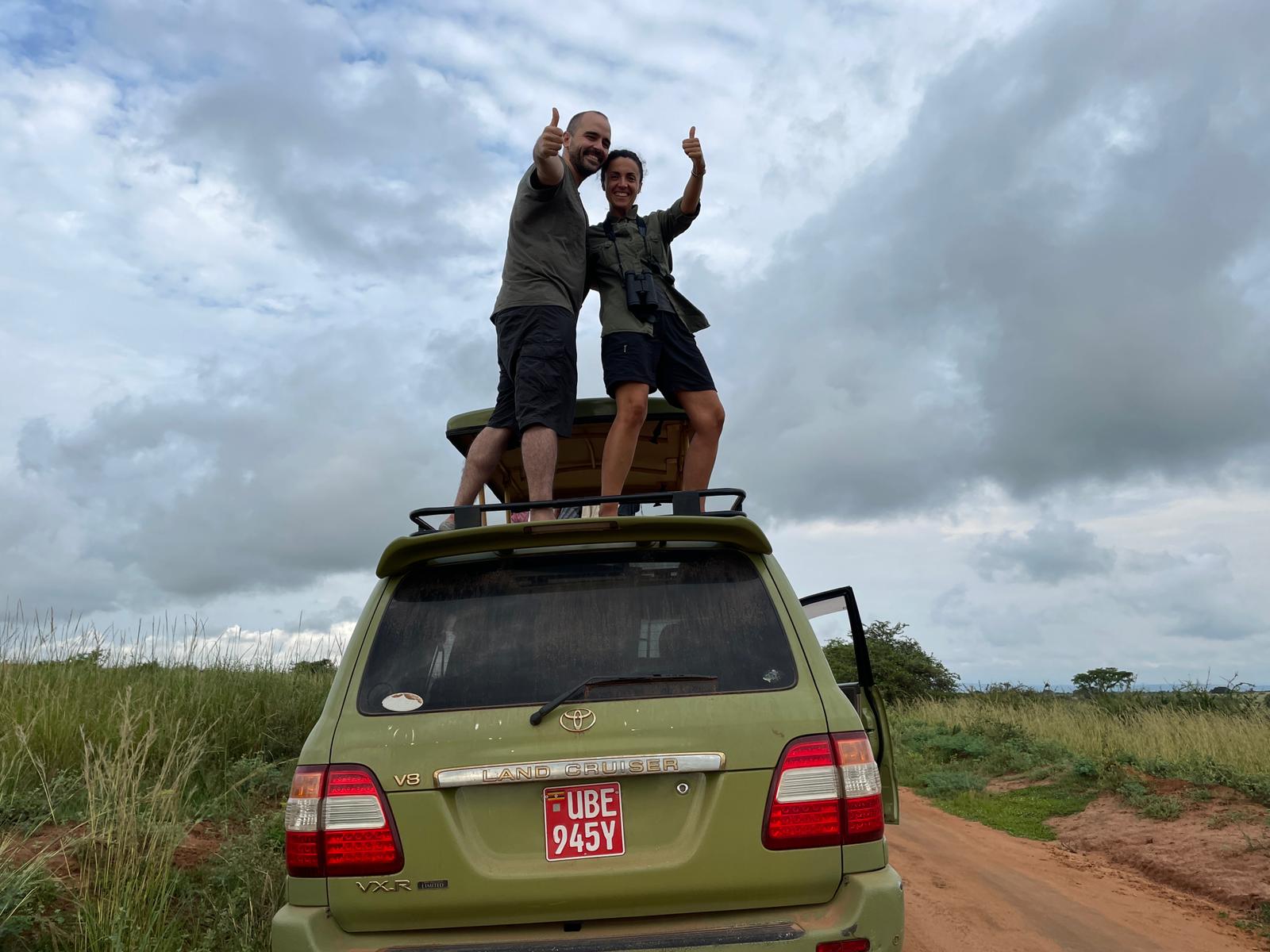 Inside, the Prado typically accommodates 5-7 passengers depending on configuration, with safari-spec models usually set up for 4-6 travelers to ensure everyone has window access for game viewing. The cabin features air conditioning (essential in Uganda’s equatorial climate), comfortable seating with decent legroom, and multiple charging points for cameras and devices.
Inside, the Prado typically accommodates 5-7 passengers depending on configuration, with safari-spec models usually set up for 4-6 travelers to ensure everyone has window access for game viewing. The cabin features air conditioning (essential in Uganda’s equatorial climate), comfortable seating with decent legroom, and multiple charging points for cameras and devices.
The Prado’s cargo capacity is generous, easily swallowing safari luggage, camping equipment, and supplies for extended trips. Its fuel tank capacity (around 87-150 liters depending on model) provides excellent range—crucial when traveling between remote locations where fuel stations are scarce.
Safari Performance
For game drives, the Prado excels. Its pop-up roof or open sides (in safari-modified versions) allow for standing and photography, while the vehicle’s relatively quiet operation minimizes disturbance to wildlife. The elevated seating position provides excellent visibility across savannah landscapes.
The Prado handles Uganda’s diverse terrain with confidence—from the black cotton soil of Murchison Falls to the rocky tracks of Kidepo Valley. Its reliability is legendary, with many safari Prados accumulating hundreds of thousands of kilometers with proper maintenance.
Ideal For: Small groups (2-6 people), family safaris, medium-distance journeys, travelers seeking comfort without sacrificing capability.
2. Safari Land Cruiser: The Indestructible Workhorse
 When safari operators need a vehicle that absolutely will not fail, they turn to the Toyota Land Cruiser 70 Series—commonly known simply as the “Safari Land Cruiser.” This is the vehicle you’ll see in the most remote corners of Uganda, often caked in mud and bearing the scars of countless adventures.
When safari operators need a vehicle that absolutely will not fail, they turn to the Toyota Land Cruiser 70 Series—commonly known simply as the “Safari Land Cruiser.” This is the vehicle you’ll see in the most remote corners of Uganda, often caked in mud and bearing the scars of countless adventures.
Built for Punishment
The 70 Series Land Cruiser represents old-school engineering at its finest. Introduced in 1984 and still in production, this vehicle prioritizes durability and capability over creature comforts. Its ladder-frame chassis, solid front and rear axles, and mechanical simplicity make it nearly indestructible and easily repairable even in remote locations.
The typical safari-spec Land Cruiser features a powerful diesel engine (often the 1HZ 4.2L or the more modern 1VD-FTV 4.5L V8 turbo diesel), delivering the low-end torque necessary for mud-plugging and rock-crawling. The full-time four-wheel-drive system with locking differentials provides exceptional traction in the most challenging conditions.
Safari Configuration
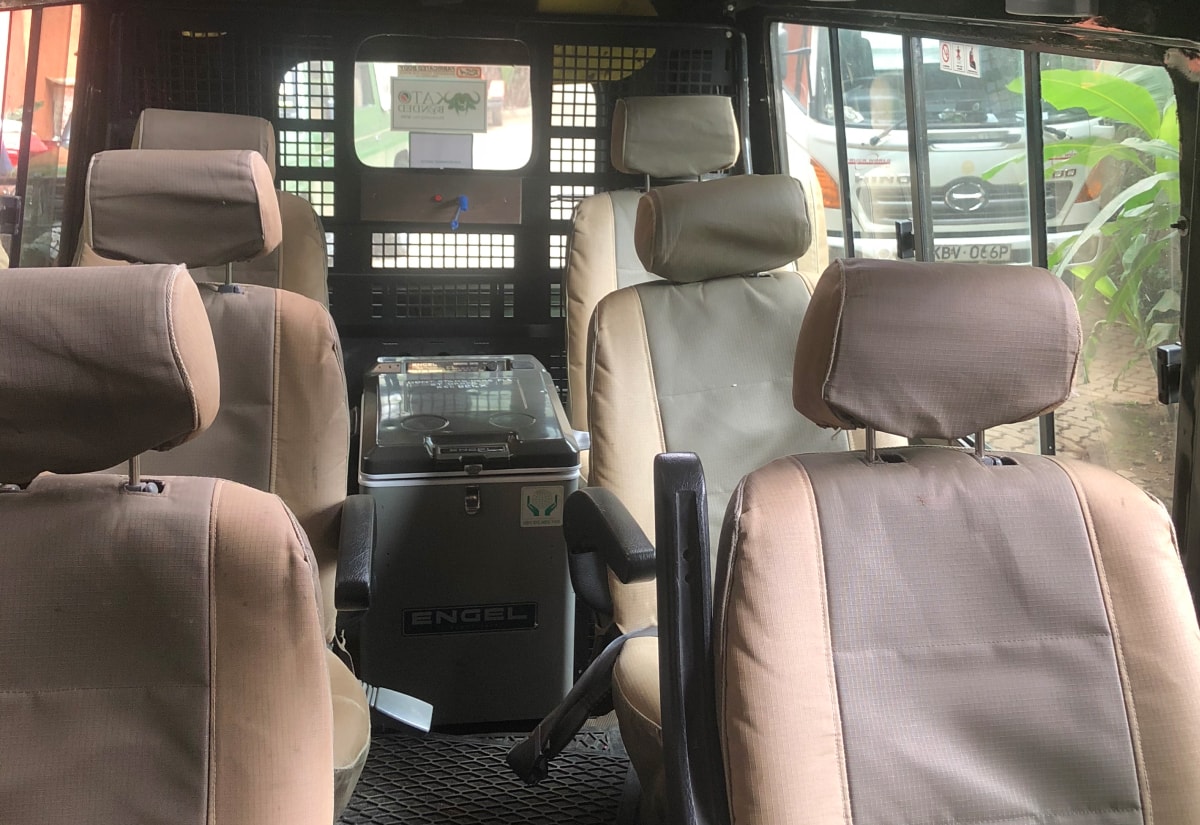 Safari Land Cruisers are typically configured as extended-body vehicles with raised roofs and open sides, accommodating 7-9 passengers in stadium-style seating. This configuration is purpose-built for game viewing, with every passenger having an unobstructed view and access to fresh air—perfect for wildlife photography.
Safari Land Cruisers are typically configured as extended-body vehicles with raised roofs and open sides, accommodating 7-9 passengers in stadium-style seating. This configuration is purpose-built for game viewing, with every passenger having an unobstructed view and access to fresh air—perfect for wildlife photography.
The open-sided design might seem uncomfortable, but it’s actually ideal for Uganda’s climate and safari conditions. It allows for 360-degree viewing, eliminates window glare in photographs, and creates an immersive safari experience where you can hear the sounds of the bush and feel part of the environment.
Unmatched Reliability
The Safari Land Cruiser’s reputation for reliability is unparalleled. These vehicles routinely operate in conditions that would sideline lesser 4x4s. Their mechanical simplicity means fewer electronic systems to fail, and their widespread use across Africa ensures parts and expertise are readily available.
During Uganda’s rainy seasons, when roads become quagmires, the Safari Land Cruiser powers through where other vehicles bog down. Its high ground clearance (often enhanced with suspension lifts), aggressive tire options, and sheer mechanical grunt make it the ultimate tool for reaching remote destinations.
The Trade-Offs
Comfort is sacrificed for capability. The ride is firm, the interior is basic, and the noise levels are higher than more modern SUVs. Long highway stretches can be tiring. However, for serious safari enthusiasts, overlanders, and those venturing to Uganda’s most remote corners, these trade-offs are worthwhile.
Ideal For: Large groups, budget-conscious travelers, remote expeditions, rainy season travel, authentic safari experiences, photographers needing unobstructed views.
3. Safari Van: The Social Safari Experience
 The safari van, typically based on the Toyota Hiace or similar commercial van platforms modified for tourism, represents a uniquely East African approach to safari travel. While not a traditional 4×4 in the purist sense (many operate in 2WD with occasional 4WD options), these vehicles have become synonymous with budget and mid-range safaris across Uganda.
The safari van, typically based on the Toyota Hiace or similar commercial van platforms modified for tourism, represents a uniquely East African approach to safari travel. While not a traditional 4×4 in the purist sense (many operate in 2WD with occasional 4WD options), these vehicles have become synonymous with budget and mid-range safaris across Uganda.
Design and Configuration
Safari vans undergo significant modifications from their commercial origins. The most distinctive feature is the pop-up roof, which extends upward to create standing room and provides panoramic viewing during game drives. This design allows passengers to stand and scan for wildlife while remaining protected from the sun.
Inside, safari vans typically accommodate 7-9 passengers in forward-facing or stadium seating, with large windows ensuring every seat has wildlife viewing potential. The configuration promotes social interaction, making safari vans popular with group travelers, budget safari-goers, and those who enjoy the camaraderie of shared experiences.
Practical Advantages
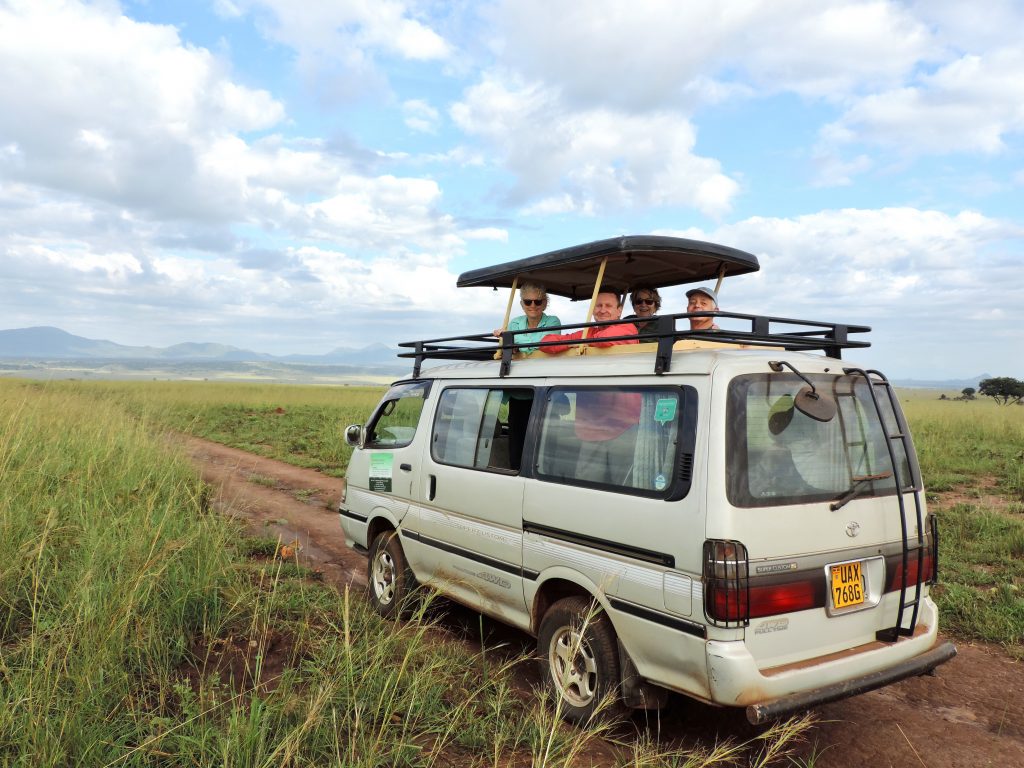 Safari vans offer several practical benefits. Their enclosed cabin provides protection from dust and rain—a significant advantage during Uganda’s wet seasons or when traveling long distances on murram roads. Air conditioning keeps passengers comfortable during hot midday hours, while the enclosed space offers security for valuables.
Safari vans offer several practical benefits. Their enclosed cabin provides protection from dust and rain—a significant advantage during Uganda’s wet seasons or when traveling long distances on murram roads. Air conditioning keeps passengers comfortable during hot midday hours, while the enclosed space offers security for valuables.
The van’s lower center of gravity compared to tall 4x4s provides more stable highway cruising, which is advantageous on Uganda’s increasingly improved main roads. Fuel efficiency is typically better than larger 4x4s, contributing to lower overall safari costs.
Storage is cleverly integrated, with roof racks accommodating luggage and equipment while keeping the interior spacious. The pop-up roof, when closed, allows the van to navigate low-hanging branches and maintain a relatively low profile.
Limitations
The safari van’s primary limitation is ground clearance and off-road capability. While adequate for most park roads and main tourist routes during dry conditions, safari vans struggle in deep mud, steep rocky sections, and seriously degraded roads. They’re best suited to established safari circuits and parks with well-maintained road networks like Queen Elizabeth, Lake Mburo, and parts of Murchison Falls.
During heavy rains, safari vans may be unable to access certain areas, and travelers might miss opportunities available to those in more capable 4x4s. The enclosed nature, while offering protection, also creates a barrier between passengers and the environment—you sacrifice some of the raw safari experience.
Ideal For: Budget travelers, group safaris, families with young children, main tourist circuits, dry season travel, those prioritizing comfort and social interaction over extreme capability.
4. Rooftop Tent Land Cruiser: The Overlander’s Dream
 The rooftop tent (RTT) Land Cruiser represents the pinnacle of safari self-sufficiency and adventure travel in Uganda. This setup combines a capable 4×4 (usually a Land Cruiser Prado, 70 Series, or 200 Series) with a hard-shell or soft-shell rooftop tent, creating a mobile camping platform that opens up entirely new possibilities for exploration.
The rooftop tent (RTT) Land Cruiser represents the pinnacle of safari self-sufficiency and adventure travel in Uganda. This setup combines a capable 4×4 (usually a Land Cruiser Prado, 70 Series, or 200 Series) with a hard-shell or soft-shell rooftop tent, creating a mobile camping platform that opens up entirely new possibilities for exploration.
The Ultimate Freedom
Rooftop tent vehicles epitomize safari independence. You’re no longer bound by lodge locations or campsite facilities. Instead, you can camp in authorized wilderness areas, community campsites, and remote locations, waking to sunrise over the savannah or falling asleep to the sounds of the African night.
The Land Cruiser provides the capability to reach these remote locations, while the rooftop tent offers surprisingly comfortable accommodation. Modern RTTs feature thick foam mattresses, weather-resistant materials, and quick setup times (typically 2-5 minutes from closed to ready-to-sleep).
Technical Setup
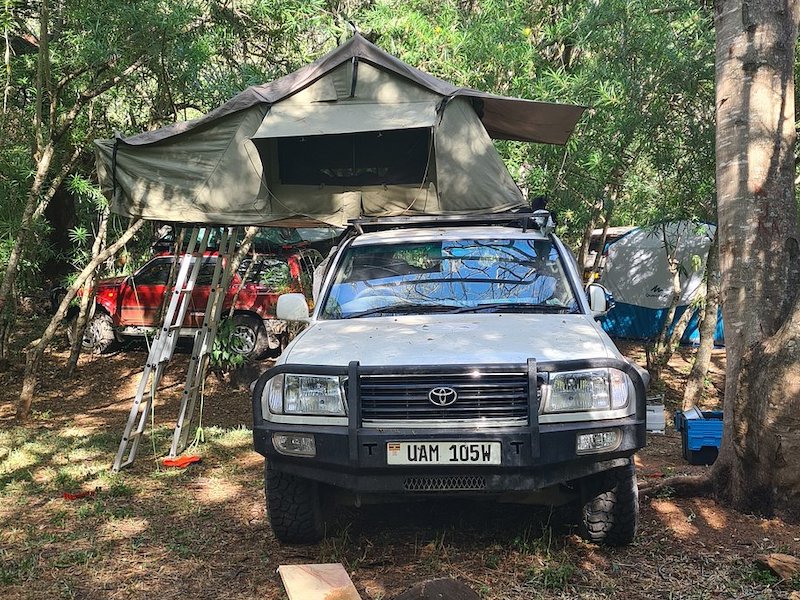 The typical RTT Land Cruiser is equipped with heavy-duty roof racks rated to support the weight of the tent and occupants (200-300kg total). The vehicle itself is usually fitted with upgraded suspension to handle the additional roof weight, auxiliary lighting for night-time camp setup, dual battery systems for powering accessories, and often a second fuel tank for extended range.
The typical RTT Land Cruiser is equipped with heavy-duty roof racks rated to support the weight of the tent and occupants (200-300kg total). The vehicle itself is usually fitted with upgraded suspension to handle the additional roof weight, auxiliary lighting for night-time camp setup, dual battery systems for powering accessories, and often a second fuel tank for extended range.
Many RTT Land Cruisers come equipped with comprehensive camping gear including portable fridges, cooking equipment, water storage, recovery gear (hi-lift jack, sand tracks, tow straps), and extensive first-aid supplies. This self-sufficiency is essential when traveling in remote areas far from assistance.
The Camping Experience
Sleeping in a rooftop tent offers unique advantages. Elevated 2-3 meters off the ground, you’re above most ground-dwelling insects and have a safety buffer from curious wildlife. The views are spectacular—imagine watching stars from your tent in Kidepo Valley or waking to elephants grazing nearby in Queen Elizabeth Park.
The elevation also provides better airflow, keeping you cooler in hot conditions. Most quality RTTs feature large windows with mosquito netting, allowing you to sleep with ventilation while remaining protected from insects—crucial in Uganda’s malaria-endemic areas.
Practical Considerations
RTT camping requires more self-sufficiency and safari knowledge than lodge-based travel. You’ll need to understand camping regulations in Uganda’s parks, practice leave-no-trace principles, and be comfortable with basic bush living. Water and waste management become your responsibility, and you’ll need to plan provisions carefully for multi-day trips.
The rooftop tent significantly increases the vehicle’s height and weight, affecting fuel consumption and handling. Highway cruising becomes less efficient, and you must be mindful when parking under trees or entering areas with low clearance.
Cost and Logistics
RTT Land Cruiser hire typically costs more than standard safari vehicles due to the specialized equipment and comprehensive fit-out. However, you save substantially on accommodation, potentially making it cost-effective for longer safaris. Many operators offer guided RTT safaris where a professional driver-guide handles navigation and logistics while you enjoy the adventure.
Ideal For: Adventure travelers, overlanders, photographers seeking unique perspectives, travelers wanting to maximize time in nature, those exploring multiple remote parks, experienced campers, and anyone seeking authentic wilderness experiences.
5. Toyota RAV4: The Urban-Safari Crossover
 While Uganda’s serious safari territory demands heavy-duty 4x4s, the Toyota RAV4 occupies an important niche for travelers with mixed itineraries combining city experiences, cultural tours, and light safari activities.
While Uganda’s serious safari territory demands heavy-duty 4x4s, the Toyota RAV4 occupies an important niche for travelers with mixed itineraries combining city experiences, cultural tours, and light safari activities.
The Modern Compromise
The RAV4 represents the modern crossover approach—offering four-wheel drive capability in a comfortable, fuel-efficient, and easy-to-drive package. It’s significantly more car-like than truck-based 4x4s, with independent suspension at all four corners, a unibody construction, and refined on-road manners.
Recent RAV4 models feature sophisticated all-wheel-drive systems that automatically distribute power between axles and individual wheels as needed. While not as robust as the mechanical 4WD systems in Land Cruisers, the RAV4’s AWD is adequate for graded dirt roads, light mud, and the improved park tracks found in many of Uganda’s more accessible reserves.
Practical Application in Uganda
The RAV4 excels at urban exploring, road trips on improved highways, and visits to Uganda’s more accessible attractions. It’s ideal for travelers visiting Kampala, exploring the source of the Nile in Jinja, touring the Ssezibwa Falls, or visiting Lake Mburo National Park via the well-maintained main entrance road.
The RAV4’s compact size makes it maneuverable in congested Kampala traffic, easier to park, and less intimidating for drivers unaccustomed to large 4x4s. Fuel economy is significantly better than larger vehicles—an important consideration for budget-conscious travelers covering long distances.
Inside, the RAV4 typically accommodates five passengers in comfort, with modern amenities like climate control, USB charging, Bluetooth connectivity, and comfortable seats suitable for long drives. The cargo area easily handles luggage for a family or small group.
Limitations for Serious Safaris
 The RAV4’s limitations become apparent in challenging conditions. Ground clearance, while adequate for maintained roads, is insufficient for seriously rutted tracks or deep mud. The lighter construction and smaller tires provide less protection against sharp rocks and stumps. During heavy rains, the RAV4 may struggle where larger 4x4s proceed confidently.
The RAV4’s limitations become apparent in challenging conditions. Ground clearance, while adequate for maintained roads, is insufficient for seriously rutted tracks or deep mud. The lighter construction and smaller tires provide less protection against sharp rocks and stumps. During heavy rains, the RAV4 may struggle where larger 4x4s proceed confidently.
For game viewing, the RAV4’s lower roofline and standard configuration limit photographic opportunities and wildlife viewing compared to proper safari vehicles with pop-up roofs or open sides. You’ll experience safaris from inside an enclosed cabin, which, while comfortable, lacks the immersive quality of open safari vehicles.
The Right Choice for Specific Travelers
For travelers whose Uganda itinerary emphasizes cultural experiences, city touring, and easily accessible natural attractions, with perhaps one or two days in well-developed parks during dry season, the RAV4 makes excellent sense. It’s comfortable, economical, and capable enough for mixed-use travel.
However, travelers planning extensive safari time, visiting remote parks, traveling during rainy seasons, or seeking authentic bush experiences should opt for more capable vehicles.
Ideal For: City-based itineraries with light safari components, couples or small families, budget-conscious travelers, those uncomfortable driving large 4x4s, dry season travel on main routes, cultural and heritage tours.
Planning Your 4×4 Uganda Safari
Choosing the Right Vehicle
Your vehicle choice should align with your itinerary, travel season, group size, and budget. Consider these factors:
- Destinations: Remote parks (Kidepo, Semuliki) demand serious 4x4s; accessible parks (Lake Mburo) are manageable in lighter vehicles.
- Season: Rainy season requires maximum capability; dry season offers more flexibility.
- Group size: Larger groups benefit from Safari Land Cruisers or vans; smaller groups enjoy Prado comfort.
- Budget: Safari vans and RAV4s offer economy; Land Cruisers provide capability; RTT setups balance cost through camping.
- Comfort priorities: Long highway distances favor Prados and RAV4s; serious bush time suits Safari Land Cruisers.
Self-Drive vs. Driver-Guide
Uganda permits both self-drive and guided 4×4 safaris. Self-driving offers freedom and flexibility but requires confidence navigating unfamiliar roads, understanding park regulations, and handling mechanical issues. Most visitors, especially first-timers, benefit enormously from experienced driver-guides who know the terrain, wildlife behavior, and best routes.
 Rental Considerations
Rental Considerations
Reputable 4×4 rental companies in Uganda offer comprehensive packages including:
- Well-maintained vehicles with service histories
- Comprehensive insurance coverage
- 24/7 roadside assistance
- Optional camping equipment and supplies
- GPS navigation and detailed maps
- Pre-loaded contact information for parks and accommodations
Always verify insurance coverage, understand excess/deductible amounts, and confirm what’s included in breakdown assistance before signing rental agreements.
Essential Preparations
Regardless of vehicle choice, prepare properly:
- Carry sufficient water (2-3 liters per person daily)
- Pack basic tools and recovery equipment
- Include comprehensive first-aid supplies
- Bring multiple copies of important documents
- Download offline maps and GPS coordinates
- Carry emergency contact information
- Ensure adequate fuel with reserve capacity
The Magic of 4×4 Exploration in Uganda
Uganda’s extraordinary diversity—from mountain gorillas in misty forests to lions climbing fig trees, from the world’s longest river’s source to Africa’s highest peaks—demands capable transportation to truly appreciate. The right 4×4 vehicle transforms logistics into adventure, ensuring you reach incredible destinations while enjoying the journey itself.
Whether you choose the versatile Prado, the indestructible Safari Land Cruiser, the social safari van, the freedom of a rooftop tent setup, or the modern RAV4, your 4×4 becomes your trusted companion in discovering why Uganda truly deserves its title as the Pearl of Africa. The memories created—tracking gorillas through bamboo forests, watching elephants cross your path, camping under African stars—will last a lifetime, and your 4×4 will have made it all possible.
The open road awaits, the wilderness calls, and Uganda’s treasures are ready to be discovered. Choose your 4×4 wisely, prepare thoroughly, and embark on the African adventure of a lifetime. To book a 4×4 rental car in Uganda for safari or business project- simply contact us now by sending an email to info@ugandacarrentalservices.com or calling +256-700135510 to speak with the reservations team.


